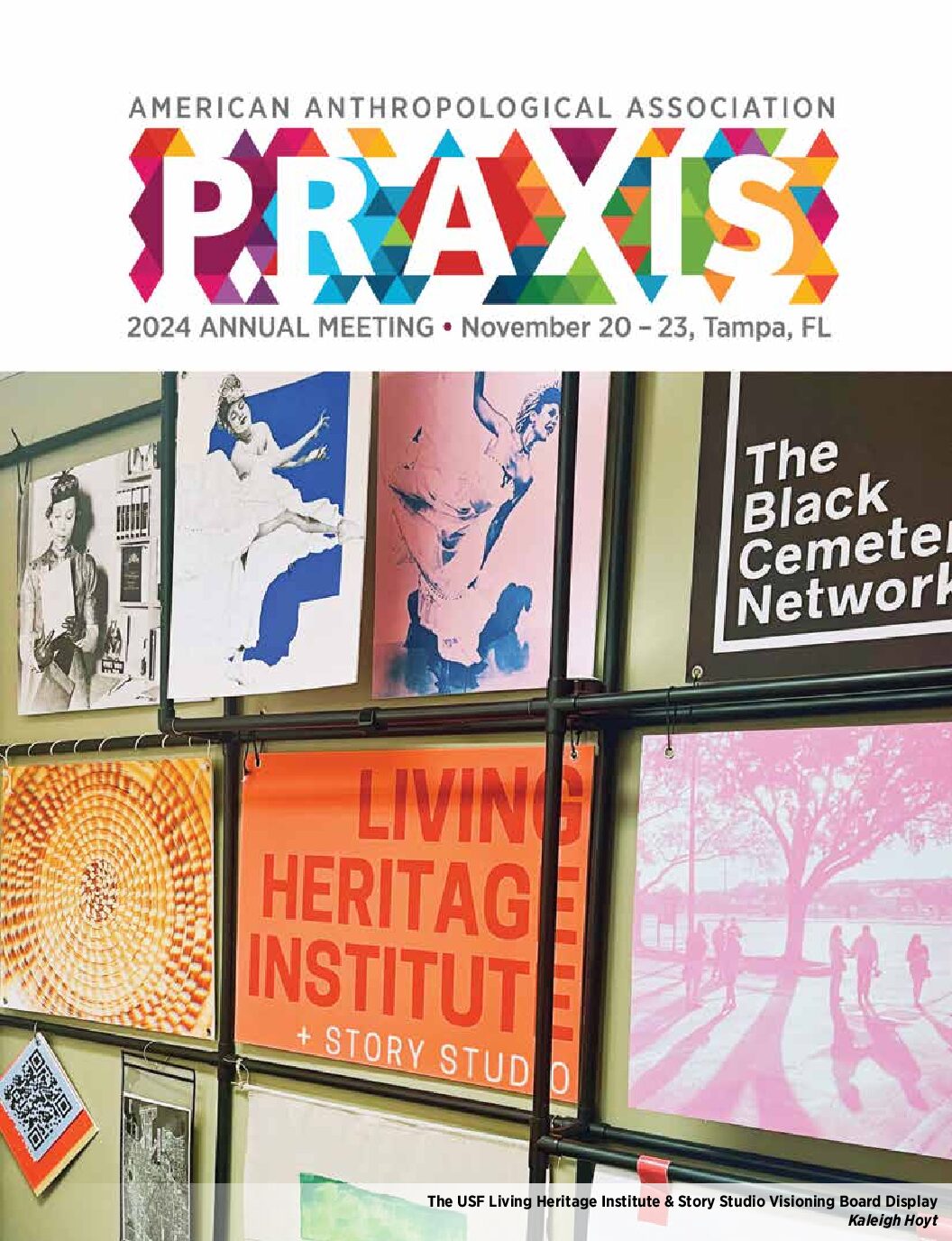Encounters with Lunar Dust
The Association for the Anthropology of Policy
Dana Burton
July 12, 2019
From Neil Armstrong’s footprints to future missions to Mars, contamination fears and policies lie at the heart of our cosmic explorations.
The stiff, gray cardboard box sat calmly on the table in the quiet NASA archive at the University of Houston Clear Lake: History Archive, Box #52, Astronomy Papers and Research. Folder 8, “Parker personal correspondence,” contained the transcript of an astronaut’s personal diary about landing on the moon. Robert A. Parker briefly described lunar dust in one entry, stating: “it infiltrates” (Parker 1996). I was reminded immediately of the Apollo 11 moon landing on July 20, 1969. During a tour at the Johnson Space Center the day before, the clip of the legendary landing played on a screen: small clouds of dust flew up as astronauts Neil Armstrong and Buzz Aldrin stepped from the module onto the moon. What wasn’t captured onscreen was that after venturing outside the capsule the astronauts would be covered in light, powdery dust, the abrasiveness of which could scratch human or technology (Johnson Space Center History Collection 1970b).
Besides its material qualities, scientists were eager to learn whether or not lunar dust was a physiological threat to astronaut health and to humans in general. The lunar dust the astronauts encountered and collected—and the corresponding concerns and imaginaries surrounding contamination and planetary quarantine procedures—continues to shape the production of scientific knowledge and NASA’s space exploration missions by highlighting how scientists deal with the unknowns of space.

Imagining the extraterrestrial through policy
Discussions about extraterrestrial contamination occurred well before astronauts touched down in the Sea of Tranquility. In the 1950s, questions arose regarding spacefaring nations’ capacity to adequately protect against two kinds of contamination: forward and backward. Forward contamination is when Earth microbial life infects extraterrestrial ecologies. Backward contamination occurs when extraterrestrial life, transmitted through samples or the bodies of astronauts, contaminates the earth’s biosphere (Meltzer 2011). In 1967, the Outer Space Treaty was written to address these contamination concerns and other issues pertaining to states’ responsibilities in space. In particular, Article 9 called for space actors to conduct their explorations of celestial bodies “so as to avoid their harmful contamination and also adverse changes in the environment of the earth resulting from the introduction of extraterrestrial matter and, where necessary…adopt appropriate measures for this purpose.”
Concurrently, the Committee for Space Research, the National Academy of Sciences, and the Departments of Agriculture, Health, and others came together to express concerns regarding space sample handling protocols. These various institutions called for stringent protection protocols, such as bodily procedures for how to pick up lunar samples and how to package them, sample return containment, and astronaut quarantine measures (Phillips 1974).
These policies were anticipatory, intended to deal with the unknown. Discussion of what constituted a “safe” encounter with the extraterrestrial became a key component for confronting fears of forward and backward contamination. And while the fears associated with backward contamination were mostly allayed after Apollo 11, at that moment in time, lunar dust was imbued with a multitude of potentialities. Thus, policies developed after that era demonstrate how science and NASA, as an institution responsible to the public and the earth, dealt with uncertainty through protocols that prioritized separations—the astronaut from the public, the samples from the lab, the extraterrestrial from Earth (Johnson Space Center History Collection 1969c, 1970e; see also Olson 2018). These procedures became a part of disciplinary practices that modeled the relations between astronauts and the extraterrestrial (Jones 1995, Johnson Space Center History Collection 1970d). At stake were more than astronauts’ bodies, but the bodies of all humans at the time of exposure and the future of space exploration.
A matter of contamination
We all know the words that followed Armstrong’s descent onto the lunar surface, but scientists were most interested in the “giant leap” of knowledge gained through astronauts’ scientific experiments. International, domestic, and NASA groups each advocated for particular procedures to address their concerns about contamination, shaping the mechanisms through which scientific knowledge was produced. For example, tasks such as kicking lunar dust, making footprints, and collecting ground samples—which would provide scientists with data about the chemical and physical qualities of the dust—had to be conducted in view of the Houston Command Center live stream. However, in a transcript Armstrong details a series of quick excursions off camera to retrieve samples that he identified as valuable for analysis (Johnson Space Center Oral History Collection 2001, Jones 1995). In this case, samples were deemed important enough to allow for improvised action in an unknown environment. Similarly, Armstrong describes how the importance of viable sample data resulted in keeping a selection of samples in the pocket of his jumpsuit—pushing the limit of what can be deemed bodily separation from samples—in case the lunar module was destroyed during landing.
When the astronauts landed in the Pacific Ocean, they were given special isolation garments to wear until they could be transferred into quarantine. As per regulation, physicians and scientists assessed the effects of the space environment on their bodies, a precaution against backward infection of Earth life. Quarantine lasted for 21 days and astronauts were required to reside in the mobile quarantine facility (Edwards 2004). The announcement that the astronauts were healthy confirmed that a new domain was open to human exploration—outer space. Thus, the events of Apollo 11 had a part in restructuring NASA as both an institution dedicated to science as well as an entity responsible for exploratory missions in the present and for the future.
Entangled futures
Before Apollo 11, contamination policies focused on the dangers of interacting with non-Earth matter. As such, Apollo represented more than an opportunity to demonstrate American prestige or conduct science in space; it also exposed humans to a completely different environment for the first time. The role of protocols in shaping astronaut actions and missions and then the very real encounters with the lunar environment has and continues to affect the ways in which practice in and around space is configured.
Today, as NASA advocates human exploration of Mars, questions about contamination are still entangled with how scientists dealt with unknown factors in space in 1969. Actual encounters with lunar dust and the moon environment allowed scientists to observe what made the strange extraterrestrial environments familiar (see for example, Messeri 2016, Lembert 2017). Although the fear of contamination hailed an assortment of experts, resources, and perspectives that shaped astronaut practices, astronaut interactions with the lunar environment opened up how NASA couldact within the interplanetary discursive space. Archival records show that after Apollo 11, NASA made changes not only to who could be trained as an astronaut—extending candidacy to geologists—but also to training methods in how to deal with dust by using special brushes and vacuum filters (Johnson Space Center History Collection 1970c, 1970b, 1970e). The non-hazardousness of the moon drove not only the development of space science, but also encouraged dynamism in configuring protection protocols. Yet, it is important to problematize the “safety” of the moon to understand the potential repercussions for humanity as it imagines itself in future exploration forays into the solar system. If the Outer Space Treaty’s mandate for peaceful uses of outer space is to be upheld, how can the shifting policies and practices around uncertainty help us reflect on the ways humanity will expand into space?
Dana Burton is a PhD candidate in the Department of Anthropology at George Washington University. Her research follows NASA’s search for life in outer space. Specifically, she is interested in scientists’ efforts to grapple with how to imagine, detect, and contain unearthly life and the potential ways in which this may reconfigure the discipline of biology.
Archival reference list
“Action Items Resulting From Meeting With Dr. Gold Mar 10 (Sensitivity to Lunar Dust ).”
1970a, April 13. 072-42, Apollo Series. Johnson Space Center History Collection, University of Houston-Clear Lake Archives.
“Effects of Lunar Dust on Space Suit Functions.” 1970b, February 17. 072-31, Apollo Series.
Johnson Space Center History Collection, University of Houston-Clear Lake Archives.
“Evaluation of Candidate Brushes for Removal of Lunar Dust from Apollo EVA Suits.” 1970c,
January 15. 072-23, Apollo Series. Johnson Space Center History Collection, University of Houston-Clear Lake Archives.
“Investigation of the Effects of Lunar Dust During Lm (Lunar Module) Landing.” 1969a,
December 22. 072-16, Apollo Series. Johnson Space Center History Collection, University of Houston-Clear Lake Archives.
“Lunar Dust Detector Experiment.” 1969b, August, 27. 075-23, Apollo Series. Johnson Space Center History Collection, University of Houston-Clear Lake Archives.
“Meeting #2 Operational Problems Relating To Lunar Dust Exposure.” 1970d, February 19. 072-31, Apollo Series. Johnson Space Center History Collection, University of Houston-Clear Lake Archives.
NASA Johnson Space Center Oral History Project. 2001. “Neil Armstrong.” Johnson Space Center Oral History Collection, University of Houston-Clear Lake Archives.
NASA Johnson Space Center Oral History Project. 2009. “Gary E. Lofgren.” Johnson Space Center Oral History Collection, University of Houston-Clear Lake Archives.
“Parker personal correspondence.” 1996, May. Box 52, Folder 8, Parker Papers. University of Houston-Clear Lake Archives.
“Possible Hazardous Nature of Lunar Dust in Regions outside the Zone Of Rocket Exhaust
Contamination Near The Lm (Lunar Module).” 1969c, September, 4. 071-61, Apollo Series. Johnson Space Center History Collection, University of Houston-Clear Lake Archives.
“Request for Determination of Lunar Dust Susceptibility to Chemical Alteration And
Radiation Damage from Protons Incident on the Lunar Surface // Space Science //.” 1969d, October 9. PA-9-10-4, Apollo Series. Johnson Space Cetner History Collection, University of Houston-Clear Lake Archives.
“Vacuum Cm (Command Module) Interior Surfaces to Collect Lunar Dust and Other Loose
Material.” 1970e, January 12. 076-32, Apollo Series. Johnson Space Center History Collection, University of Houston-Clear Lake Archives.
Cite as: Burton, Dana. 2019. “Encounters with Lunar Dust.” Anthropology News website, July 12, 2019. DOI: 10.1111/AN.1220
A link to this article on the Anthropology News website can be found here.


